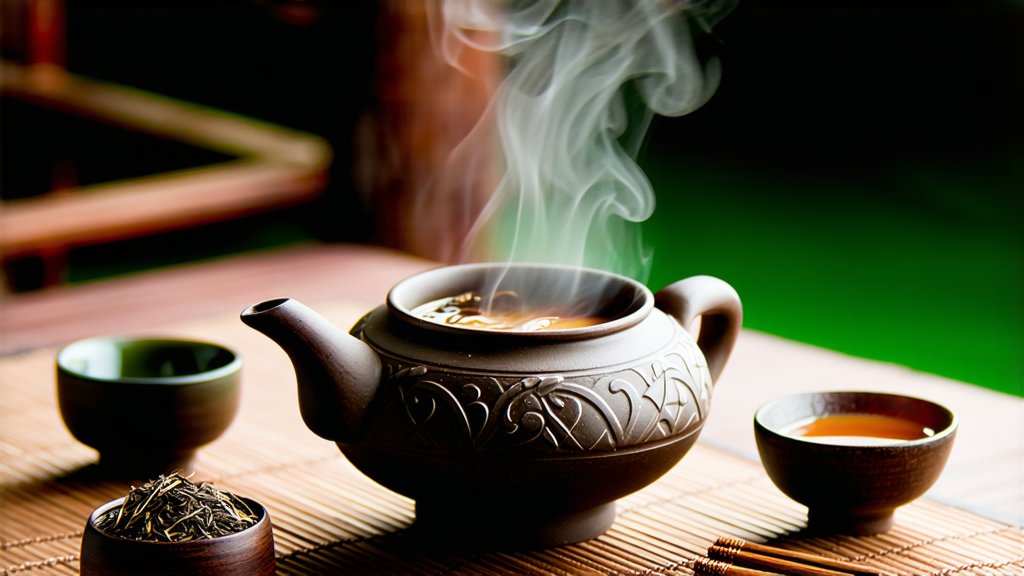
Pu-erh tea, a unique category within the realm of Chinese black teas, stands as a testament to centuries of tea culture evolution, particularly in the Yunnan province. Its distinctiveness lies not only in its deep, earthy flavors but also in the intricate processes involved in its creation and maturation, which have been refined over generations. This essay delves into the historical background, varieties, production techniques, and tasting methods associated with Pu-erh tea, aiming to illuminate this fascinating beverage for an international audience.
Historical Background
The origins of Pu-erh tea can be traced back to the ancient tea-growing regions of southwestern China, specifically the Yunnan province. It is believed that the production of Pu-erh began during the Tang Dynasty (618-907 AD), gaining prominence during the Ming Dynasty (1368-1644 AD) when it became a significant article of trade along the ancient Tea Horse Road. Unlike other Chinese teas that primarily underwent simple drying or firing processes, Pu-erh tea introduced a fermentation step, setting it apart and giving birth to a new category of tea.
Varieties of Pu-erh Tea
Pu-erh tea comes in two main forms: raw (Sheng) and ripe (Shou). Raw Pu-erh undergoes a natural aging process, where the sun-dried leaves are compacted into cakes or bricks and stored in a controlled environment. Over time, microbial activity and oxidation transform the tea's flavor profile, leading to complex notes reminiscent of damp earth, aged wood, and sometimes even hints of fruit. On the other hand, Ripe Pu-erh undergoes a accelerated fermentation process known as "wet piling," where the piled leaves are kept moist and warm to encourage rapid microbial action, resulting in a mellower, more earthy taste with a smoother finish.
Production Techniques
The journey from leaf to cup for Pu-erh tea involves several meticulous steps:
-
Leaf Selection: Only the tender shoots and leaves are picked, usually from ancient tea trees or older bushes, ensuring a richer flavor and aroma.
-
Withering: Freshly harvested leaves are spread out to wilt under the sun, reducing moisture content and softening the cell structure.
-
Fixation: The withered leaves are briefly heated to halt enzymatic activity, preserving their green color and preventing further oxidation.
-
Rolling: Leaves are rolled to release juices and shape them into tight spirals or balls.
-
Fermentation (for Raw Pu-erh): Rolled leaves are left to age naturally, with periodic turning and monitoring to ensure even fermentation. This process can take years or even decades.
-
Wet Piling (for Ripe Pu-erh): In this controlled fermentation process, leaves are piled high and kept humid and warm for several weeks to months, promoting microbial growth and speeding up the aging process.
-
Drying: After fermentation, the tea is dried to remove excess moisture and stabilize its quality.
-
Compression: Finally, the dried leaves are often pressed into various shapes such as cakes, bricks, or tuochas (nestles), which facilitate storage and aging.
Tasting Methods
To truly appreciate Pu-erh tea, one must engage in a mindful tasting ritual:
-
Warming the Cup: Begin by rinsing your teapot and cups with hot water to预热 them and remove any residues.
-
Infusion Preparation: Use boiling water for the first few infusions to open up the leaves and release their full flavor potential. Subsequent infusions may require slightly cooler water.
-
First Infusion: Steep the tea for about 5-10 seconds, discarding this initial brew to 'wake up' the leaves.
-
Subsequent Infusions: Gradually increase steeping times with each infusion, typically ranging from 10 to 30 seconds, depending on personal preference and the age of the tea. Older teas generally require longer steeping times.
-
Observation: Examine the tea liquor's color, clarity, and aroma. Pu-erh tea typically exhibits a deep amber to reddish-brown hue.
-
Sipping and Savoring: Take small sips, allowing the tea to coat your palate fully. Notice the evolving flavors—from initial bitterness or astringency to subsequent sweetness or umami notes—and the aftertaste that lingers.
-
Appreciation: Reflect on the tea's complexity, the craftsmanship involved in its production, and its cultural significance as you savor each cup.
In conclusion, Pu-erh tea is more than just a beverage; it embodies a profound connection between nature, history, and human ingenuity. Its production is a labor of love, demanding patience and expertise at every stage. For those who embark on the journey of exploring Pu-erh tea, it offers not merely a drink but an experience that transcends time and space, inviting us to partake in a legacy that has been cherished for centuries.